Crossing spectacular but challenging landscapes, New Zealand's state highway network relies on a large number of bridges and structures. We're responsible for maintaining nearly 4200 bridges and large culverts. We also maintain other structures, including tunnels, retaining walls, sea walls, footbridges, sign gantries and stock underpasses.
The bridges on our network range from major, multi-lane motorway bridges and multi-span bridges to single-span, single-lane structures. They are mostly built of concrete and steel, although there is still a small number of masonry and timber structures.
All bridges, large culverts and tunnels are given structure numbers based on their approximate displacement, to the nearest 100 metres, from the preceding reference station (reference stations are 'benchmarks' along a highway, approximately every 16 kilometres).
For example:
RS 232 + 8.24km (232 + 8.24 = 240.24) = Bridge 2402
RS 232 + 11.56km (232 + 11.56 = 243.56) = Bridge 2436
RS 262 + 11.52km (262 + 11.52 = 273.52) = Bridge 2735
The structure numbers are unique for each state highway but can be replicated for different state highways.
We hold structural details of all our bridges within our Bridge Data System (BDS). We're enhancing our database to also hold condition data. This will improve our ability to track the condition of all our structures.
There are limits on the weight of vehicles on New Zealand roads and bridges. These limits were introduced to protect roads from overloading.
Read more about bridge restrictions
In keeping with international best practice in bridge management, every bridge undergoes a general inspection every two years and a more detailed inspection every six years. Some have even more rigorous inspection programmes, designed to identify and track changes in their condition.
In 1996 we began a seismic screening programme to identify existing bridges that may sustain damage in an earthquake. Following this, we first upgraded strategic bridges, such as Wellington's Thorndon Overbridge and Auckland's Harbour Bridge.
Subsequently, we've completed the upgrading of bridges on high importance routes needing minor upgrades and we're completing the remaining upgrade of low risk work on an annual basis.
We're also progressing with detailed assessments and upgrade works for the highest priority bridges that require significant upgrading.
Occasionally, we need to lift bridges. This is usually because a river is experiencing a build-up of gravel and rock. Notably, we lifted the SH49 Whangaehu River Bridge before the Mt Ruapehu lahar of March 2007.
We offer a complete Bailey bridge design, build, maintenance and transport service for contractors, roading agencies and private contractors.
Find out more about Bailey bridges
Read more about our achievements and future plans for some of New Zealand's key bridges and structures:
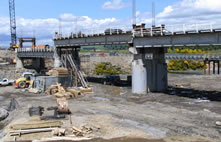
SH49 Whangaehu (elevation aerial)
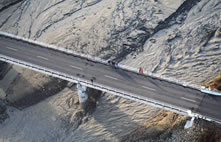
SH49 Whangaehu (lahar aerial)
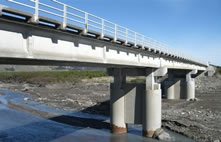
SH49 Whangaehu River

SH63 Wairau

SH73 Otira (aerial view)
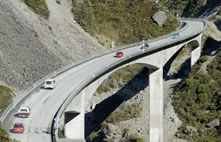
SH73 Otira Viaduct
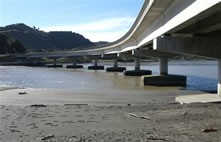
SH3 Mokau

SH6 Cook River

SH6 Kawarau River
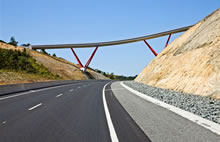
SH1N Hillcrest overbridge
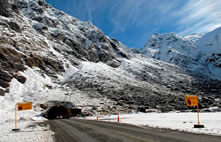
SH94 Homer Tunnel
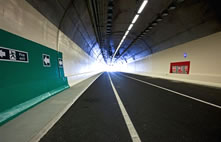
SH1N Johnstones Tunnel